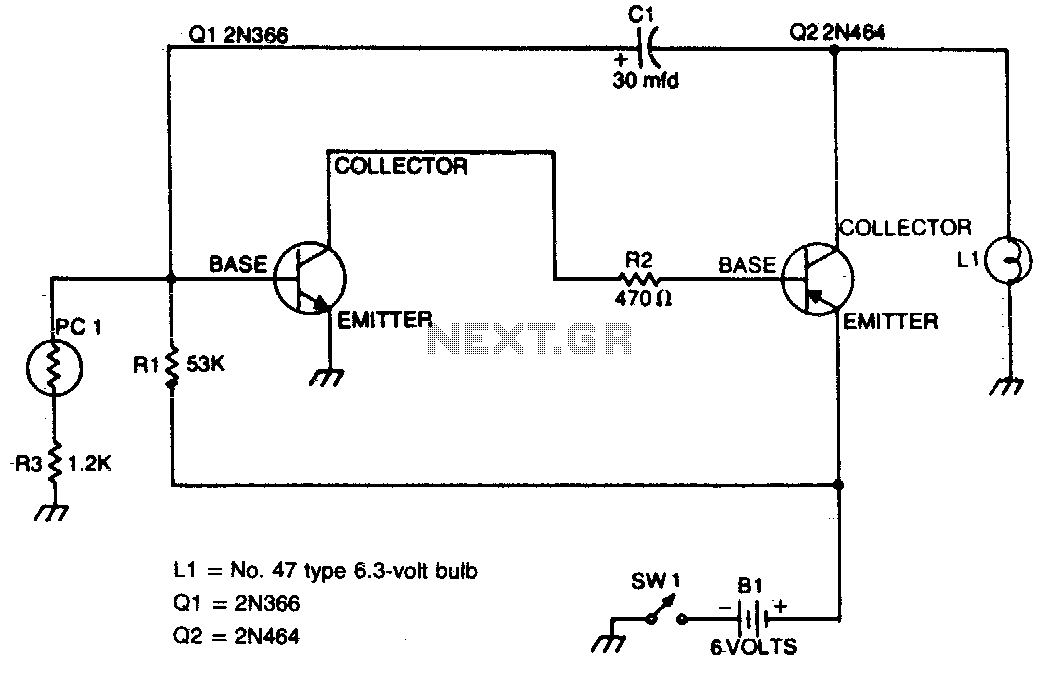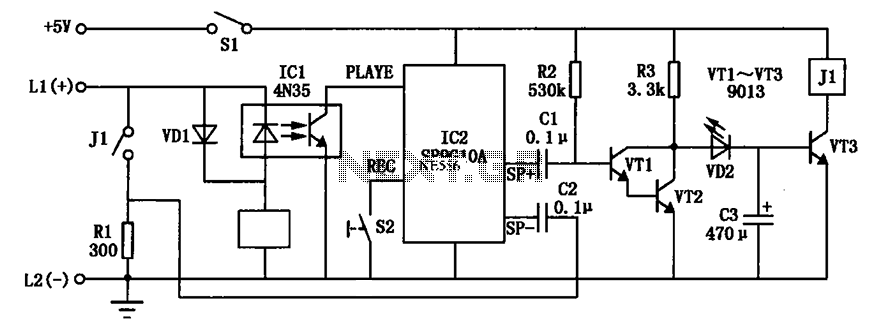
Automatic safety flasher

This flasher activates only during nighttime, providing bright illumination and automatically turning off when sunlight is detected. The photocell should be positioned on top of the unit to maximize light detection.
The circuit for the nighttime flasher utilizes a photocell sensor to control the operation of the light source. The photocell, also known as a light-dependent resistor (LDR), plays a critical role in the functionality of the device. When ambient light levels fall below a certain threshold, the resistance of the LDR decreases, allowing current to flow through the circuit and activating the flasher.
The circuit typically consists of a power supply, the photocell, a relay or transistor for switching, and the light source, which may be an LED or incandescent bulb. The photocell is connected in series with a resistor to form a voltage divider. As the light level decreases at dusk, the voltage across the photocell and resistor changes, triggering the relay or transistor to close the circuit and turn on the light.
To prevent the light from turning on during the day, the photocell must be mounted in a location that receives maximum exposure to sunlight. This ensures reliable operation and prevents unnecessary power consumption during daylight hours. The relay or transistor used in the circuit should be rated for the current and voltage of the light source to ensure safe and effective operation.
Additionally, a delay circuit may be incorporated to prevent flickering during twilight hours when light levels fluctuate. This can be achieved using a simple RC (resistor-capacitor) timing circuit that introduces a short delay before the light turns off after sunrise.
Overall, this schematic design emphasizes efficiency and reliability, ensuring that the flasher operates as intended while providing optimal illumination during the night.This flasher only comes on at night. It furnishes a bright nighttime illumination, and shuts itself off automatically as soon as the sun comes up The photocell must be mounted on top of the unit in such a way as to detect the greatest amount of available light.
The circuit for the nighttime flasher utilizes a photocell sensor to control the operation of the light source. The photocell, also known as a light-dependent resistor (LDR), plays a critical role in the functionality of the device. When ambient light levels fall below a certain threshold, the resistance of the LDR decreases, allowing current to flow through the circuit and activating the flasher.
The circuit typically consists of a power supply, the photocell, a relay or transistor for switching, and the light source, which may be an LED or incandescent bulb. The photocell is connected in series with a resistor to form a voltage divider. As the light level decreases at dusk, the voltage across the photocell and resistor changes, triggering the relay or transistor to close the circuit and turn on the light.
To prevent the light from turning on during the day, the photocell must be mounted in a location that receives maximum exposure to sunlight. This ensures reliable operation and prevents unnecessary power consumption during daylight hours. The relay or transistor used in the circuit should be rated for the current and voltage of the light source to ensure safe and effective operation.
Additionally, a delay circuit may be incorporated to prevent flickering during twilight hours when light levels fluctuate. This can be achieved using a simple RC (resistor-capacitor) timing circuit that introduces a short delay before the light turns off after sunrise.
Overall, this schematic design emphasizes efficiency and reliability, ensuring that the flasher operates as intended while providing optimal illumination during the night.This flasher only comes on at night. It furnishes a bright nighttime illumination, and shuts itself off automatically as soon as the sun comes up The photocell must be mounted on top of the unit in such a way as to detect the greatest amount of available light.





